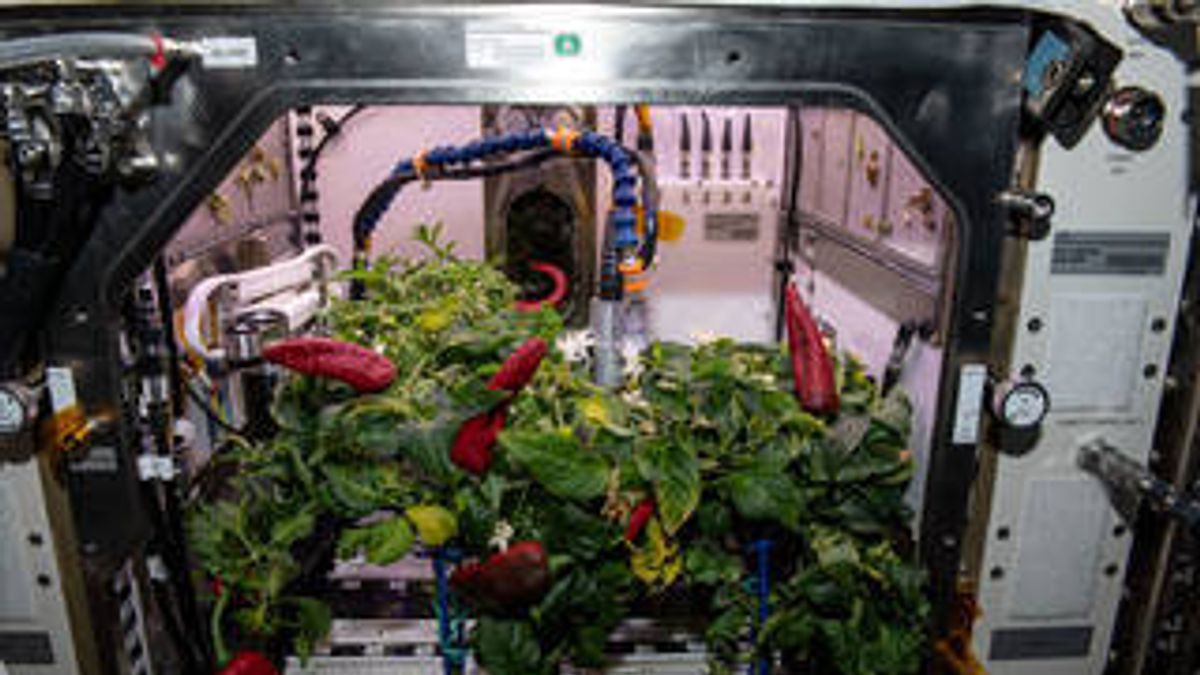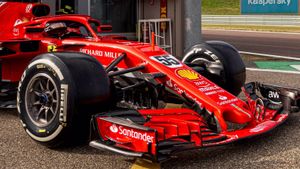JAKARTA - Growing plants on the International Space Station (ISS) or in other outer space requires extra energy and is not easy, especially for astronauts. But plants eventually live and grow there.
NASA is currently working on a comeback to produce plants in space on a large scale. Of course, this will face more formidable, expensive challenges, as logistics needs increase and technology gaps increase.
Therefore new advances in automation, robotics, and machine learning are needed to overcome some of these barriers.
Packaged food degrades over time, and any resources from Earth to the Moon or Mars settlements would probably take too long to ship. Therefore, it is better to create a vegetable and fruit garden to maintain the health of astronauts in real-time.
"It's very expensive and difficult to continuously provide food and oxygen and all the things you need to keep people alive," said Simon Gilroy, a professor of botany at the University of Wisconsin-Madison who was not involved in the research.
Gilroy says outer space is a strange place for biology to exist, and that's one reason why it's a great opportunity to study plants and the record of human evolution.
Launching Popular Science, Thursday, February 10, NASA's deep interest in astrobotany, or the study of how plants interact with the space environment, is also learned from the history of piracy.
Centuries ago, when adventurous explorers made long voyages across the oceans, many would die of scurvy, or severe vitamin C deficiency.
This essential vitamin, which can be found naturally in oranges, is a key nutrient for staying healthy. Using a technique called hyperspectral imaging, a method that can capture and process large amounts of information across the electromagnetic spectrum, scientists can develop precise plant health, with monitoring systems.
The system will collect data to help ensure food safety by autonomously monitoring plant health, as well as alerting astronauts to early plant diseases, droughts, or microbial infections.
A prototype of the system is already under development at the Kennedy Space Center, where the system is also being used to create a database of plant images that astronauts can reference when determining plant stressors.
NASA hopes that in the future, this system and similar systems will be used to help train AI algorithms that can be used on the ISS, and Gateway, an outpost that will orbit the Moon as part of NASA's Artemis space program.
"More work needs to be done before we can be sure that the crew we send to Mars will have a healthy, fully functional food system to accompany them on their journey," NASA said.
SEE ALSO:
Together with the United States Department of Agriculture (USDA), NASA is also currently investigating the use of microgreens, small, nutrient-dense plants that can be easily grown and eaten without overcooking.
Many space plant research projects are also underway, one recent example being the Ohalo III, a prototype plant production rig currently in production at the Kennedy Space Center. The rig will serve as a test platform for new plant growth technologies, and test advanced concepts for water delivery.
The rig will also let astronauts pick and eat a variety of salad-type plants, which scientists hope will cut down on boring menus.
Project Ohalo III, which began in 2019, will eventually be deployed on the Mars Transit Vehicle, where it will assist in guiding production systems as astronauts arrive on the surface of the Moon and Mars. The new paper has been published in the Journal Frontiers in Astronomy and Space Sciences.
The English, Chinese, Japanese, Arabic, and French versions are automatically generated by the AI. So there may still be inaccuracies in translating, please always see Indonesian as our main language. (system supported by DigitalSiber.id)













